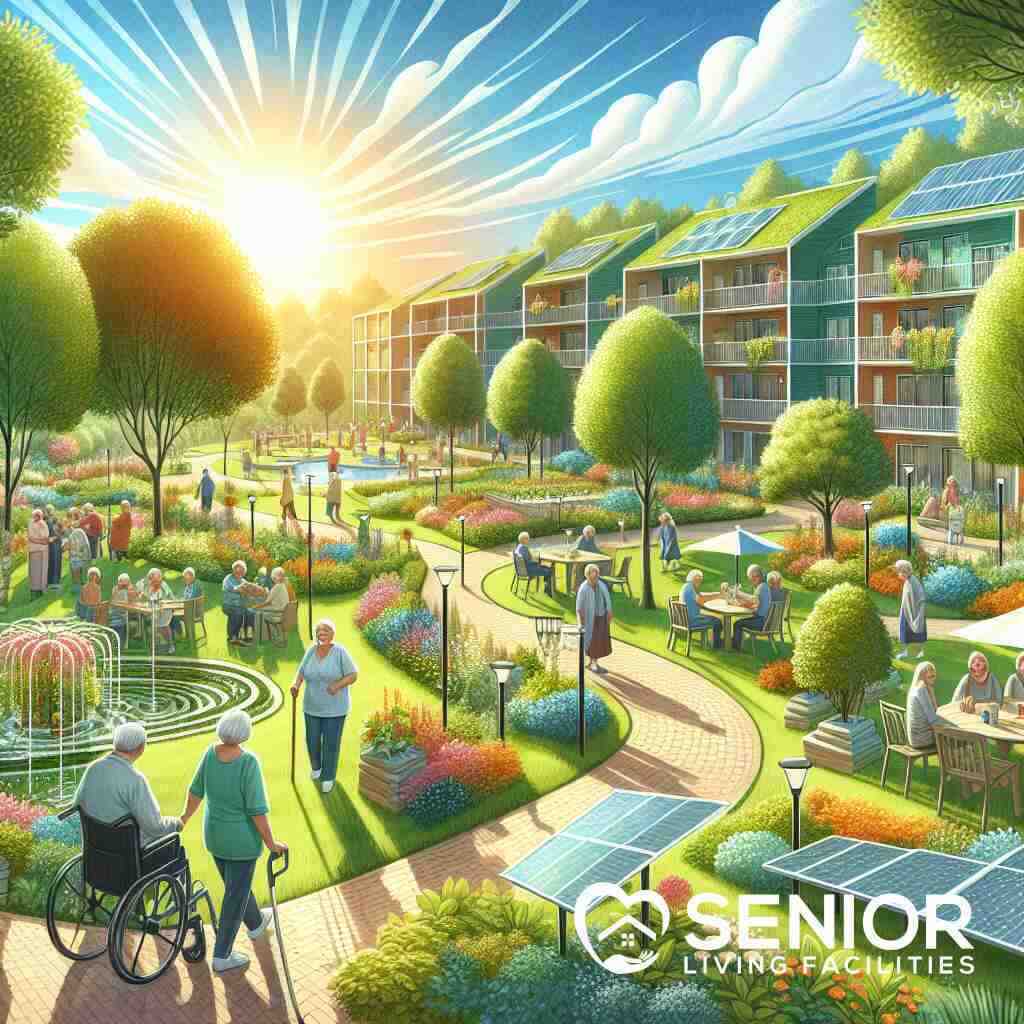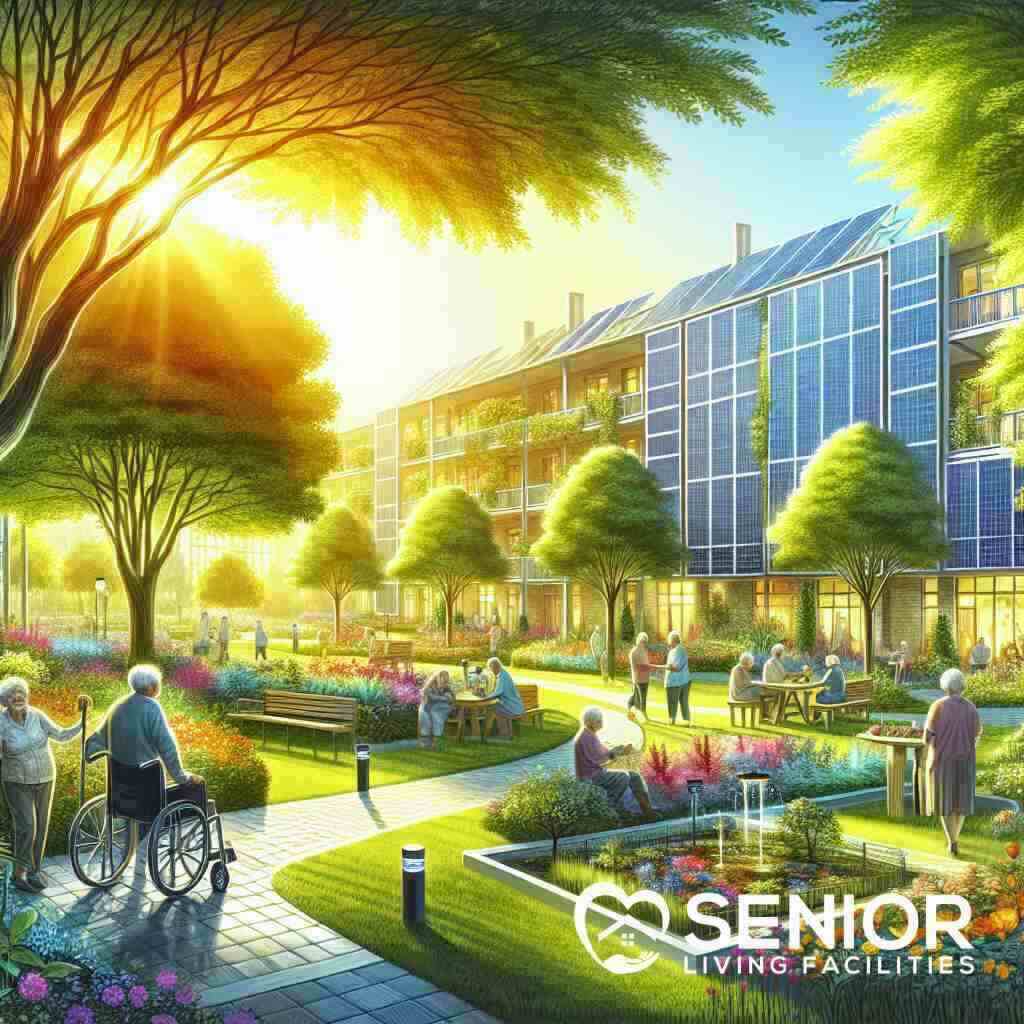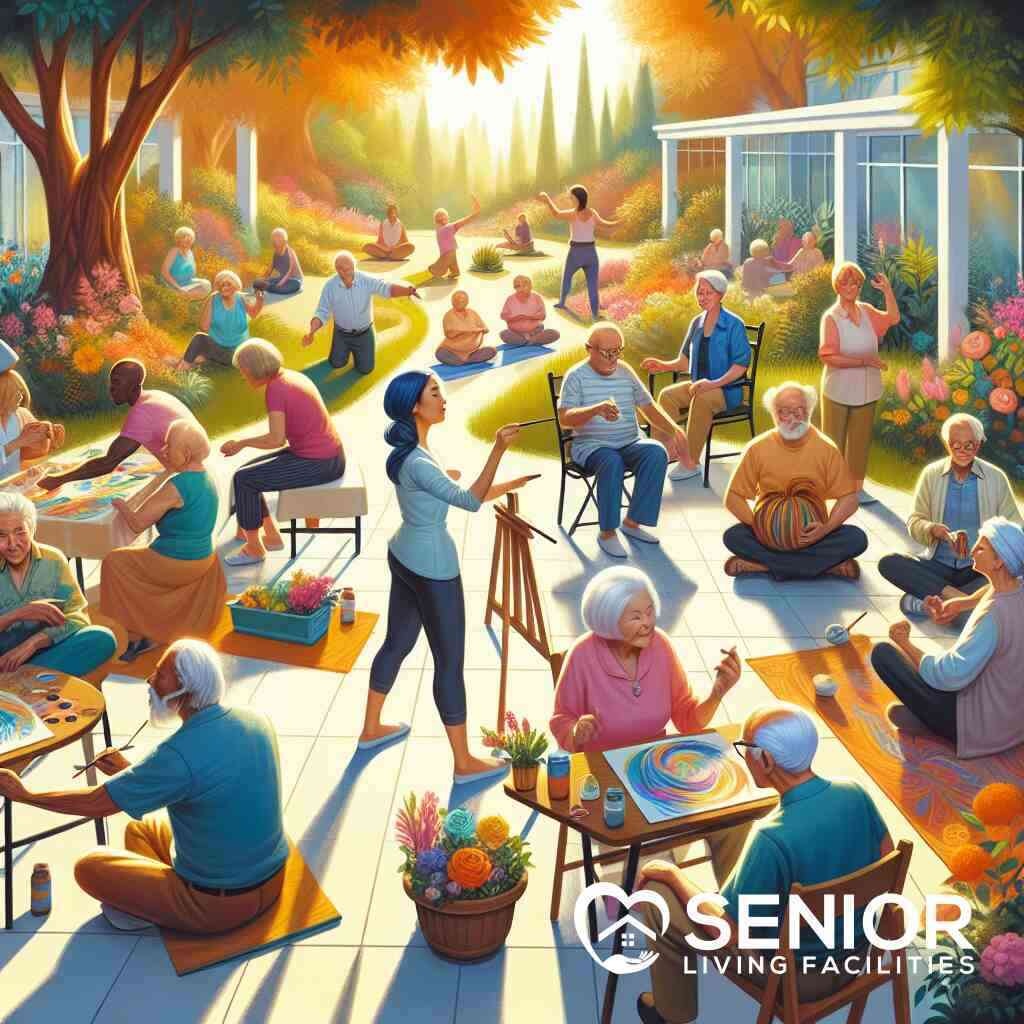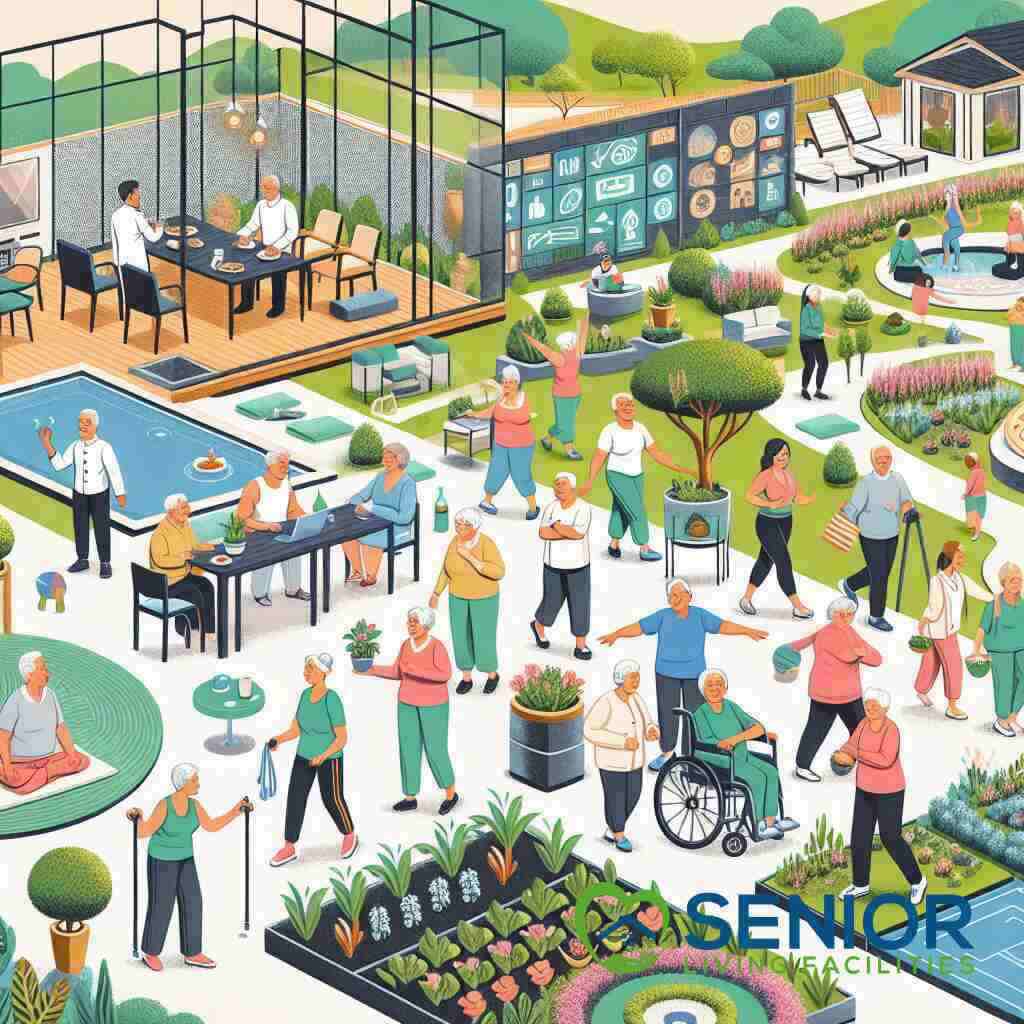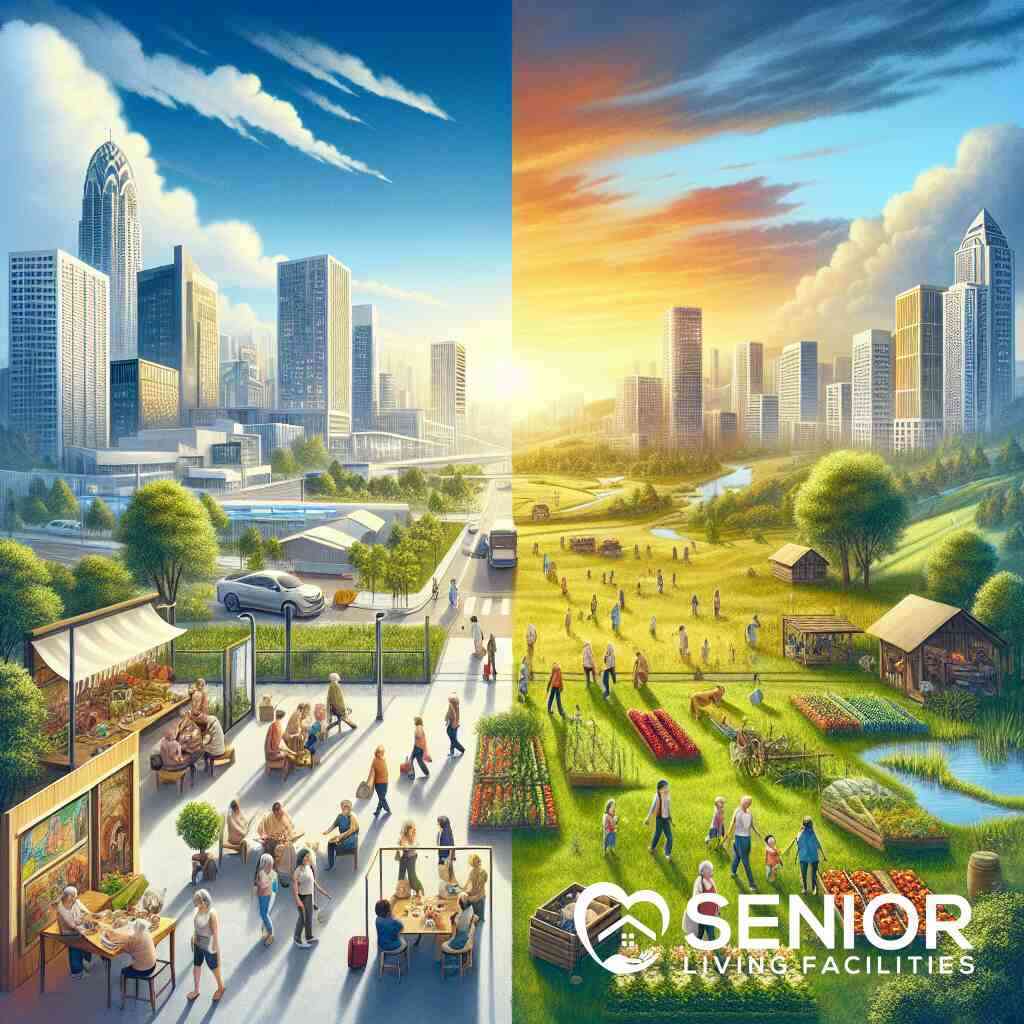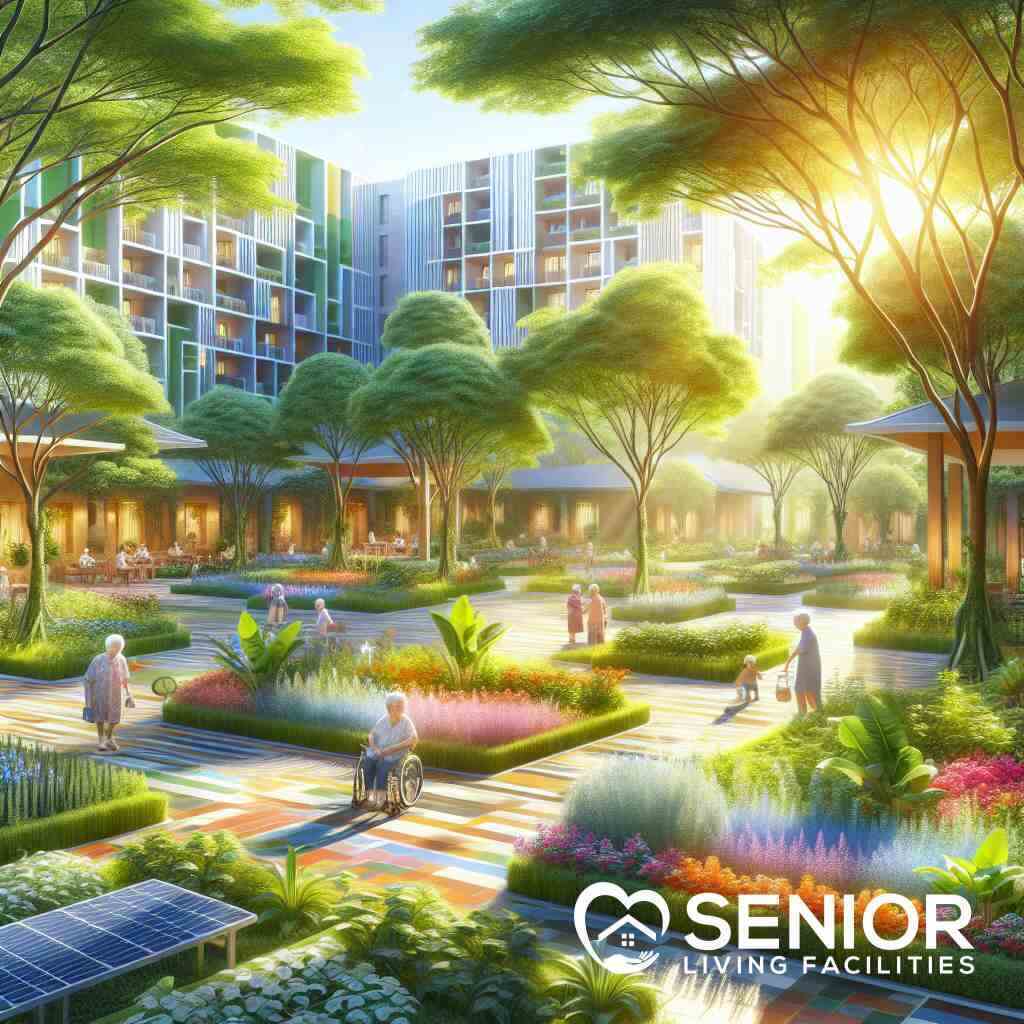
What Are the Secrets to Optimizing Senior Living Facilities?
October 24, 2024
Unlocking the Foundations of Successful Senior Living
Defining Optimal Senior Living Facilities
Defining optimal senior living facilities involves a multifaceted approach to elder care. These facilities are more than just places to reside; they are environments designed to support health, wellness, and a robust quality of life. Key components include comprehensive medical care, engaging activities, and supportive community dynamics. These aspects must seamlessly integrate to create a thriving living environment tailored to seniors’ needs. By doing so, these facilities become sanctuaries promoting longevity and satisfaction.
Optimal senior living facilities must address the evolving needs of older adults. This involves flexible care plans that adjust to residents’ changing abilities, ensuring continued independence and safety. It’s crucial to understand what defines quality communities and tailor offerings accordingly. Facilities should also focus on enhancing social connections, providing opportunities for residents to interact and form meaningful relationships. Close attention to the built environment’s accessibility further supports independence.
To attain the highest standards, these facilities continuously evaluate their operational and care methodologies. They learn from industry advancements and incorporate best practices, ensuring they remain at the forefront of elder care. Moreover, stakeholder involvement, including resident feedback, is essential for sustained improvement. A commitment to continual learning and adaptation defines outstanding senior living communities, making them leaders in the field.
Understanding the Role of Community in Senior Wellness
Understanding the role of the community in senior care is essential for optimizing living facilities. Community engagement combats loneliness, a prevalent issue among older adults, and enhances mental health by providing a sense of belonging. Facilities must create inclusive environments where residents feel valued and actively participate in community activities and decision-making processes.
Building a strong community within senior living facilities requires intentional programming. Activities should cater to diverse interests and abilities, ensuring all residents have opportunities to engage. Understanding the role of community in senior care also involves fostering a culture of mutual support among residents, encouraging friendships and neighborly connections. Staff play crucial roles as facilitators, supporting resident initiatives and community endeavors.
A community-centric approach in elder care facilities also extends to partnerships with local organizations and services. These collaborations enable residents to participate in broader community life, enhancing their social engagement. When senior living providers prioritize community building, they significantly improve residents’ overall wellness, boosting satisfaction and reducing healthcare needs.
Exploring Diverse Senior Living Options
Exploring diverse senior living options is a cornerstone of optimizing these facilities. Today’s seniors demand more personalized and varied living arrangements that reflect their unique lifestyles and preferences. From independent living to specialized care options, facilities must offer a spectrum of choices tailored to diverse needs. Senior living providers must assess and adapt to these varied requirements to ensure satisfaction and longevity.
Offering a range of living options also involves integrating innovative housing models that promote both independence and community. Multigenerational living setups, for instance, have become increasingly popular, fostering interaction across age groups. These arrangements help seniors engage actively with younger generations, providing mutual learning and support. Exploring diverse senior living options within facilities further involves staying attuned to demographic and cultural shifts.
Facilities must also remain adaptable to emerging trends and resident feedback, consistently enhancing their service offerings. This forward-thinking mindset ensures they meet current and future residents’ expectations, retaining a competitive edge. Successful optimization in senior living environments hinges on this ability to evolve, ensuring they remain vibrant communities for all senior residents.
Integrative Strategies for Elevating Senior Care
Implementing Evidence-Based Elder Care Methods
Implementing evidence-based elder care techniques involves using scientifically proven methods to enhance senior living quality. It’s fundamental for these facilities to stay updated on evolving care practices that promote health, independence, and dignity among seniors. Integrating best practices leads to more effective management of chronic conditions and better health outcomes, reducing hospitalization rates. Senior living facilities prioritize personalized care by assessing individual needs and crafting bespoke care strategies that reflect the latest research.
Evidence-based methods also extend to staff training, ensuring caregivers are well-versed in the latest care protocols. By doing so, facilities enhance their service quality and efficiency, leading to greater resident satisfaction. This approach not only optimizes care but also positions facilities as leaders in the ever-evolving landscape of senior care. For more insights on implementing these methodologies, explore Implementing evidence-based elder care techniques.
Innovative Resident Engagement Activities
Innovative resident engagement activities are vital for creating vibrant senior living communities. Activities that spark joy and participation can drastically improve residents’ quality of life. Senior living facilities are diversifying their offerings, from art classes to technology workshops, to engage seniors cognitively and socially. These activities must cater to various interests and abilities, ensuring inclusivity and broad participation.
By fostering a culture of active participation, senior facilities facilitate new friendships and social connections among residents. Staff play crucial roles as activity coordinators, encouraging participation and ensuring everyone feels welcome. Integrating these activities within daily life contributes to overall well-being and happiness. Discover how top communities employ innovative resident engagement activities to enhance their residents’ lives.
Elder Care Technology Integration
Elder care technology integration is redefining the landscape of senior living, merging innovation with compassionate care. The adoption of health technologies, such as wearable devices and telehealth solutions, enables continuous health monitoring, promoting better management of resident wellness. This integration allows for proactive health interventions, reducing emergency healthcare needs.
Incorporating technology in daily operations also enhances facility management, from automated scheduling to data-driven care adjustments. For residents, technology facilitates communication with family, bridging geographical distances and providing peace of mind. Facilities offering cutting-edge tech solutions attract tech-savvy seniors keen on maintaining a modern lifestyle. Explore the transformative impacts of elder care technology integration in senior living facilities and see how they are setting new standards in elder care.
Prioritizing Resident Safety and Comfort
Advanced Senior Living Safety Measures
In senior living facilities, safety transcends mere physical protection; it encompasses psychological security and health preparedness. Facilities must deploy advanced measures that anticipate and mitigate risks to ensure residents’ well-being. An integrated approach involves cutting-edge technologies like smart monitoring systems, enhancing both real-time response and preventive care. These systems allow caregivers to track health metrics continuously, offering interventions before conditions escalate.
Additionally, staff training in emergency response is imperative for all scenarios, from natural disasters to health crises. Regular drills and updates keep the team prepared, and residents reassured. Installing fail-safe systems, like backup power and communication networks, forms the backbone of uninterrupted care. These initiatives contribute to a comprehensive safety net that encompasses all aspects of senior care, pushing facilities to adopt enhancing senior resident safety and comfort approaches.
Adaptive Senior Living Design Insights
Designing senior living spaces requires a balance between functionality and comfort, emphasizing adaptability to residents’ evolving needs. Facilities should follow adaptive senior living design methods that incorporate accessible layouts, reducing mobility barriers. These designs include wider hallways, non-slip floors, and ergonomically correct furniture, easing daily navigation and minimizing fall risks.
Incorporating universal design principles ensures all areas are accessible to residents with varied abilities. Facilities should also consider sensory-friendly environments with adjustable lighting and noise control, offering soothing spaces. These elements, combined with personalized interior aesthetics, help create homelike atmospheres. Adapting spaces with modular furniture or customizable room settings allows residents to modify their environments to personal tastes, enhancing satisfaction and homeliness.
Enhancing Senior Resident Comfort
Enhancing comfort in senior living involves tailoring environments that cater to physical and emotional well-being. Comfort extends beyond plush furnishings; it demands ambient conditions that foster health and happiness. Facilities should ensure optimal indoor climates through sophisticated HVAC systems, maintaining ideal temperatures and air quality across varied weather conditions.
Personalized living experiences also contribute significantly to comfort. Allowing residents to input their preferences in room settings, dining options, and daily routines cultivates a sense of ownership and respect. Additionally, incorporating recreational outlets that suit various interests, from gardens to meditation spaces, accommodates a broader range of preferences, ensuring all residents find joy in their surroundings. By prioritizing comfort-enhancing strategies, senior communities maximize satisfaction, enriching overall resident life.
Achieving Cost Efficiency and Sustainability
Sustainable Senior Living Practices
The pursuit of sustainable senior living practices is not just about environmental responsibility; it’s about creating healthy and enduring communities for seniors. Facilities can achieve sustainability by integrating eco-friendly materials and energy-efficient systems into their infrastructure. Solar panels, geothermal heating, and green roofs are some examples of sustainable initiatives that reduce ecological footprints and lower operational costs. Furthermore, implementing recycling programs and minimizing water usage through advanced plumbing technology can significantly impact conservation efforts.
In addition to hardware solutions, promoting a culture of sustainability among residents and staff is crucial. Educational workshops on sustainable living practices, such as zero-waste lifestyle workshops, empower everyone to contribute actively. Incorporating organic community gardens not only provides fresh produce but also engages residents in fulfilling activities. By embracing these sustainable senior living practices, facilities can enhance their appeal and create environments that respect ecological boundaries. Explore Sustainable senior living practices to understand the transformative shift towards eco-conscious senior communities.
Maximizing Senior Living Cost Efficiency
Maximizing senior living cost efficiency plays a pivotal role in making communities accessible and affordable for more seniors. Facilities can achieve cost efficiency through strategic planning and resource allocation, focusing on areas that provide the greatest impact. Implementing energy-saving technologies and performing routine maintenance can substantially decrease utility costs. Retrofitting existing buildings with smart thermostats and LED lighting solutions is one way to start this transformation.
Additionally, adopting flexible staffing models that effectively match workforce supply with demand without compromising care quality ensures that resources are used economically. Bulk purchasing agreements for food and medical supplies can further drive down costs. Furthermore, investing in preventive health programs reduces long-term healthcare expenses by focusing on residents’ well-being. Delve deeper into Maximizing senior living cost efficiency to uncover more strategies for ensuring quality yet economical senior living.
Effective Senior Facility Management Tactics
Effective senior facility management tactics hinge on robust operational strategies and innovative thinking. By leveraging advanced digital solutions, facilities can streamline operations and improve service delivery. Workflow automation tools for scheduling, billing, and communication can significantly enhance efficiency and reduce error margins. Emphasizing a data-driven approach allows management to make informed decisions that optimize resource use and address resident needs promptly.
Engaging in continuous professional development for staff ensures teams are knowledgeable about the latest care methodologies and management practices. Services such as virtual health consultations can not only broaden healthcare access but also minimize unnecessary physical visits. Collaborating with local organizations to facilitate recreational and educational programs enriches the resident experience. These effective management tactics, alongside robust feedback mechanisms, foster environments of continuous improvement and excellence in senior living communities. Learn about Planning communities for seniors to consider the holistic approach toward creating inclusive and strategic environments for seniors.
Envisioning the Future of Senior Communities
Personalized Senior Care Plans for Aging in Place
Personalized senior care plans for aging in place empower seniors to remain in their homes while receiving tailored care that meets evolving needs. As the desire to maintain independence grows, facilities are adopting strategies that integrate home safety modifications with comprehensive support services. These plans consider individual health requirements, lifestyle preferences, and the need for community interaction, providing a holistic approach that enhances life quality. Technological advancements, such as remote monitoring and telehealth, facilitate these personalized approaches by enabling seamless healthcare delivery. By partnering with expert care providers, communities help seniors achieve their goal of aging in place comfortably and safely. For insights into the impact of these customized plans, explore personalized senior care plans for aging.
To implement these personalized care strategies effectively, communities must emphasize collaboration between caregivers and residents. This partnership fosters a shared understanding of individual goals and the specific measures needed to accomplish them. Regular assessments and plan adjustments ensure that care remains aligned with changing needs. Moreover, education and empowerment of both residents and their families are central to successful implementation, creating an environment where seniors feel supported and understood.
Resident-Centric Senior Housing Models
Resident-centric senior housing models prioritize the desires and well-being of seniors, reshaping traditional living environments into spaces that reflect personal choices. These models focus on creating customizable living options that align with each resident’s identity, fostering autonomy and dignity. By emphasizing flexible layouts and personalized amenities, these housing solutions more effectively address the emotional, physical, and social needs of seniors. Innovative designs promote community engagement while offering privacy and space for personal expression, ensuring that residents lead fulfilling lives. Top Services in Virginia Senior Living Facilities.
Engaging residents in the decision-making process enhances community integration and satisfaction. By doing so, senior living providers capture valuable insights into preferences and expectations, allowing for more effective facility planning and development. Emphasizing inclusivity and accessibility within these models ensures that no senior is left behind, promoting a genuinely supportive community atmosphere. Discover how embracing Resident-centric senior housing models transforms senior communities What Defines Luxury in Senior Living Today?.
Advanced Senior Facility Operations and Innovations
Advanced senior facility operations and innovations are driving the evolution of elder care, setting higher standards across the industry. By leveraging cutting-edge technologies and adopting forward-thinking strategies, facilities enhance operational efficiency and elevate resident experiences. Implementing smart technology solutions within these communities streamlines administrative processes and improves communication pathways, ensuring seamless service delivery. Real-time data analytics and AI-powered tools support personalized care delivery, proactively addressing health changes and improving outcomes. Ultimate Guide to Tech-Savvy Senior Living in 2024.
Adopting an innovative mindset allows senior facilities to remain competitive and responsive to residents’ needs. Emphasizing continuous learning and adaptation ensures that these operations incorporate the latest industry trends and best practices, ultimately enhancing care quality. Collaborative efforts between technology partners and care teams drive these advancements, leading to sustainable improvements in resident satisfaction and facility performance. What is the Future of Senior Living in 2024? Explore the significance of Advanced senior facility operations and innovations in shaping the future of senior communities.
Frequently Asked Questions
Question: How can optimizing senior living facilities enhance the quality of life for residents?
Answer: Enhancing the quality of life in senior living facilities involves addressing both the physical and emotional needs of residents. Facilities that focus on optimizing senior living environments ensure that residents have access to comprehensive medical care, engaging activities, and strong community support. By incorporating evidence-based senior care methods and innovative resident engagement activities, facilities promote physical well-being and foster social connections. This holistic approach leads to a vibrant community where residents experience increased satisfaction and longevity.
Question: What are some key strategies for senior community improvement that Senior Living Facilities advocate?
Answer: Senior Living Facilities emphasize several key strategies for improving senior communities. These include implementing adaptive senior living design to ensure safety and comfort, integrating eldercare technology for better health management, and promoting personalized senior care plans to meet individual needs. Facilities should also focus on maximizing resident satisfaction through innovative senior care solutions and sustainable practices that not only reduce costs but also create an eco-friendly environment. By employing these strategies, facilities can create thriving communities that enhance residents’ lives.
Question: How does the blog ‘What Are the Secrets to Optimizing Senior Living Facilities?’ address sustainable senior living practices?
Answer: In the blog ‘What Are the Secrets to Optimizing Senior Living Facilities?’, sustainable senior living practices are highlighted as essential for creating long-lasting, healthy communities. By integrating eco-friendly materials and energy-efficient systems, such as solar panels and green roofs, facilities can significantly reduce their environmental impact. Additionally, promoting sustainability through educational workshops and community gardens engages residents and fosters a sense of contribution and purpose. These practices not only benefit the environment but also lower operational costs, making facilities more appealing and efficient.
Question: What innovative methods do Senior Living Facilities recommend for resident-centric senior housing models?
Answer: Senior Living Facilities advocates for resident-centric senior housing models that prioritize autonomy and dignity. These models offer customizable living options, allowing seniors to personalize their spaces in line with their identities and preferences. Facilities should also focus on creating community engagement opportunities while maintaining privacy and space for personal expression. The Importance of Social Activities in Senior Living. Engaging residents in decision-making processes ensures that their voices are heard, leading to environments that truly reflect their needs and desires. Through such resident-centric approaches, facilities can enhance the overall well-being and satisfaction of their communities.
Question: How can elder care technology integration improve senior living facilities?
Answer: Eldercare technology integration is revolutionizing senior living facilities by providing tools for continuous health monitoring and proactive care interventions. Technologies such as wearable devices and telehealth solutions enable better management of chronic conditions, reducing the need for emergency healthcare. This integration helps facilities to enhance their operational efficiency and offer personalized care by utilizing real-time data analytics. Moreover, technology facilitates communication between residents and family members, ensuring peace of mind and staying connected, ultimately improving the overall quality of care and resident satisfaction.
